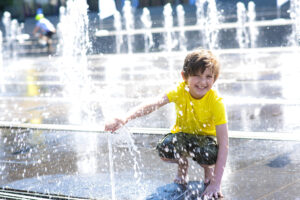 “He’s just like his father, look how cranky he wakes up in the morning!” “Oh, look how cute, Mary acts just like her mother. She’s eating one food at a time from her plate!” Parents notice idiosyncrasies as soon as their baby is born. They look for familiar movements, gestures, facial expressions, and patterns in their new child’s life. They tend to categorize certain abilities and attribute them to the mother, father, or family members. This can be a positive compilation of attributes or ones that annoy. As parents grow to know their children they accommodate the different characteristics and consider them as part of the child’s personality.
“He’s just like his father, look how cranky he wakes up in the morning!” “Oh, look how cute, Mary acts just like her mother. She’s eating one food at a time from her plate!” Parents notice idiosyncrasies as soon as their baby is born. They look for familiar movements, gestures, facial expressions, and patterns in their new child’s life. They tend to categorize certain abilities and attribute them to the mother, father, or family members. This can be a positive compilation of attributes or ones that annoy. As parents grow to know their children they accommodate the different characteristics and consider them as part of the child’s personality.
Temperament is an individual’s behavioral style and characteristic way of responding. Developmentalists such as Parker and Barrett (1992) are especially interested in the temperament of infants. Some infants are extremely active, moving their arms, legs and mouth incessantly. Others are tranquil. Some children explore their environment eagerly for great lengths of time. Others do not. Some infants respond warmly to people. Others fuss and fret. All of these behavioral styles represent a person’s temperament. (Goldsmith & Lussier, 1991; Gottfried & Lussier, 1993; Mehegany, 1992)
Key Dimensions of Temperament
Many psychiatrists such as Thomas and Chess (1987,1991), believe there are three basic types, or clusters, of temperament: easy, difficult, and slow to warm up.
- The Easy Child is generally in a positive mood, quickly establishing regular routines in infancy and adapts easily to new experiences.
- The Difficult Child tends to react negatively and cry frequently, engaging in irregular daily routines and is slow to accept new experiences.
- The Slow to Warm Up Child has a low activity level, is somewhat negative, shows low adaptability and displays a low intensity of mood.




